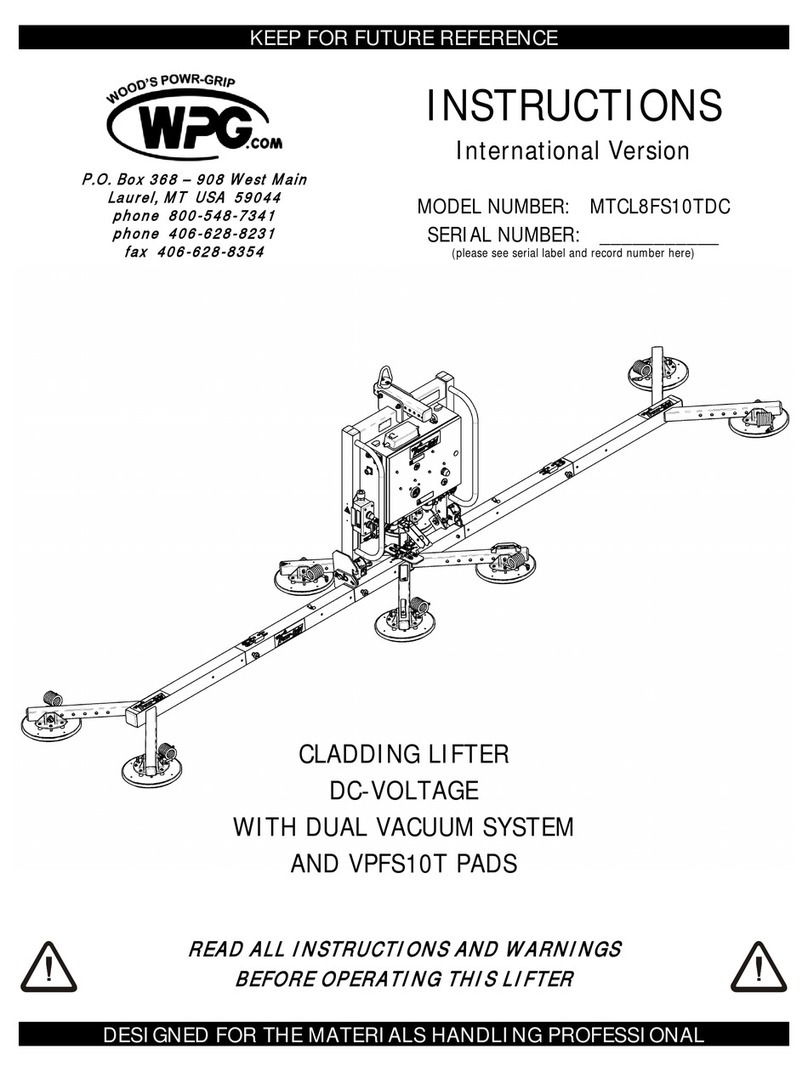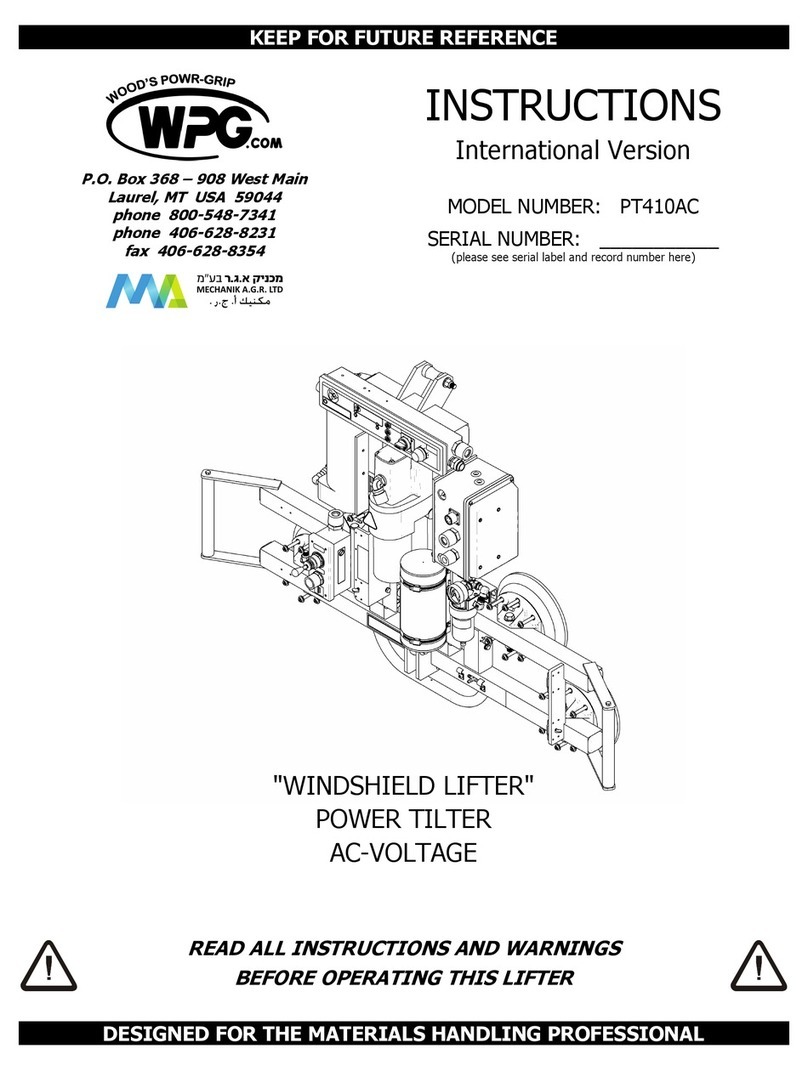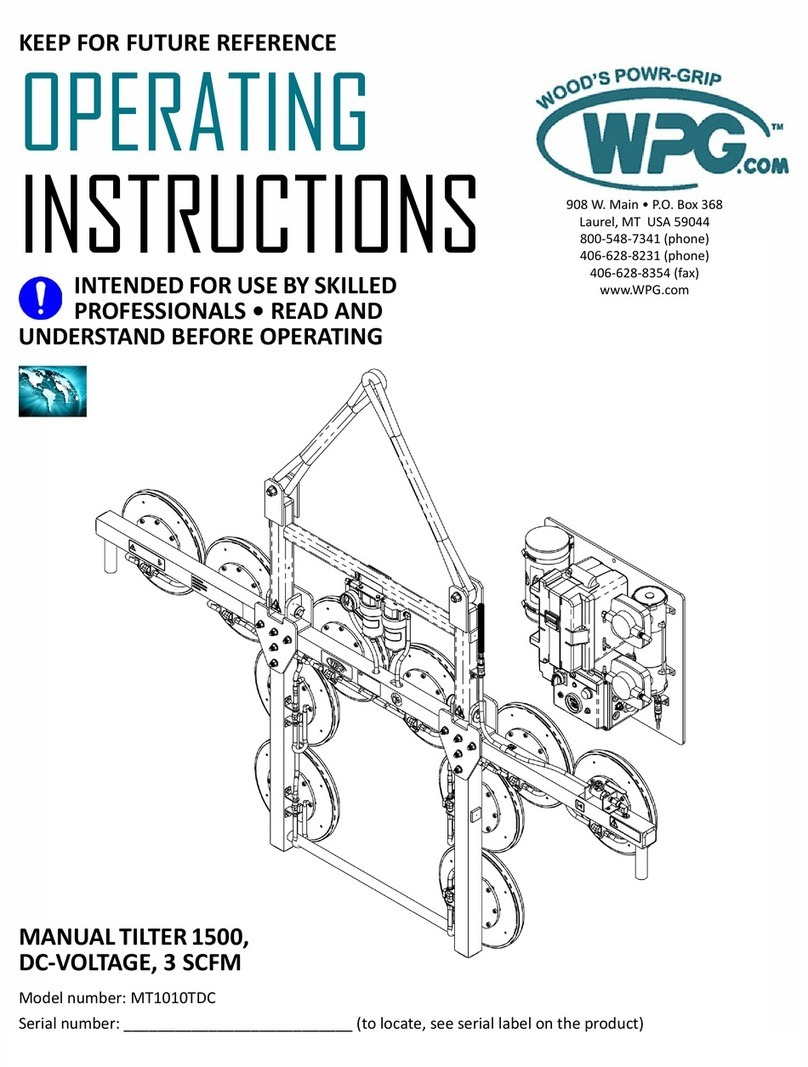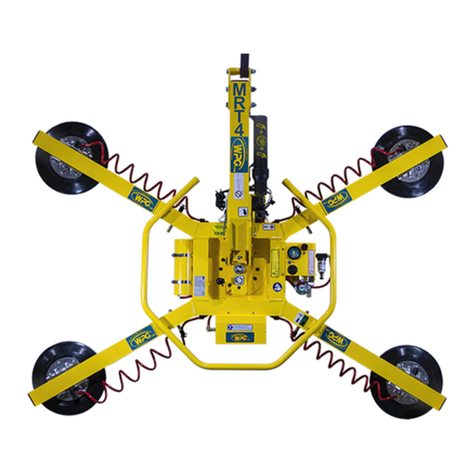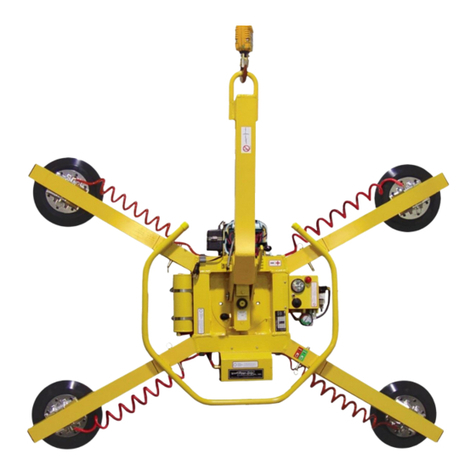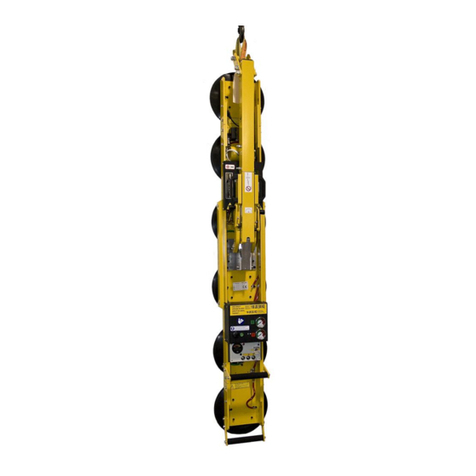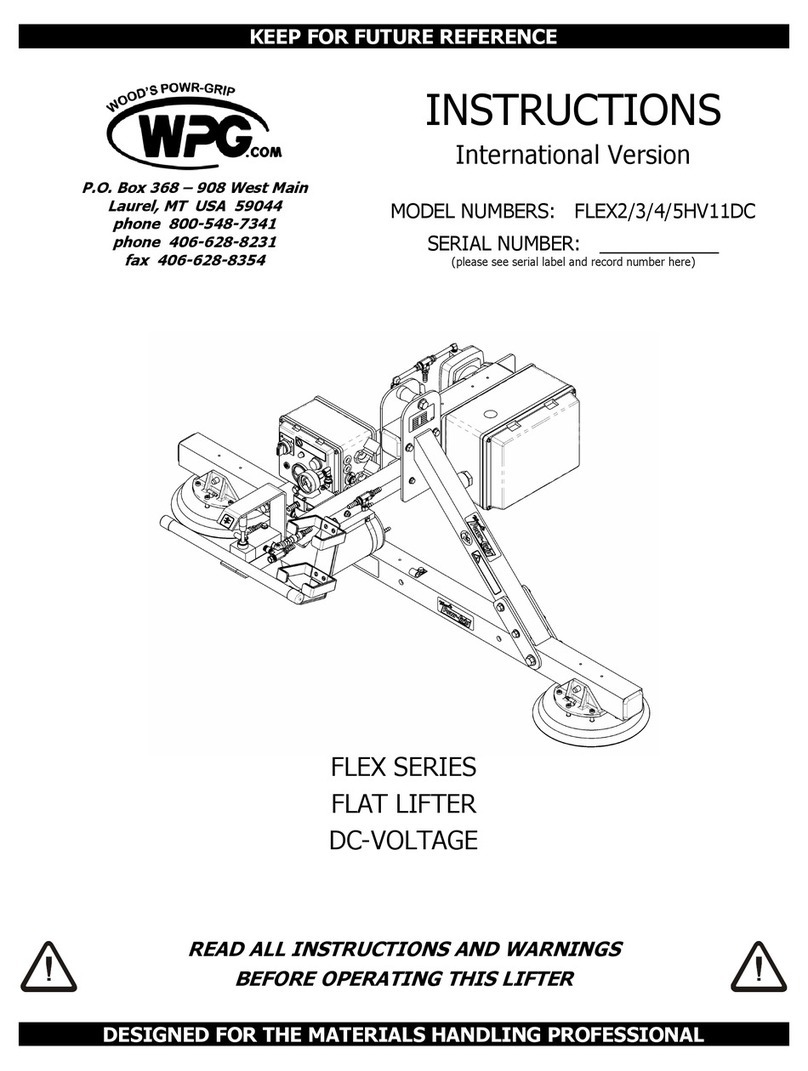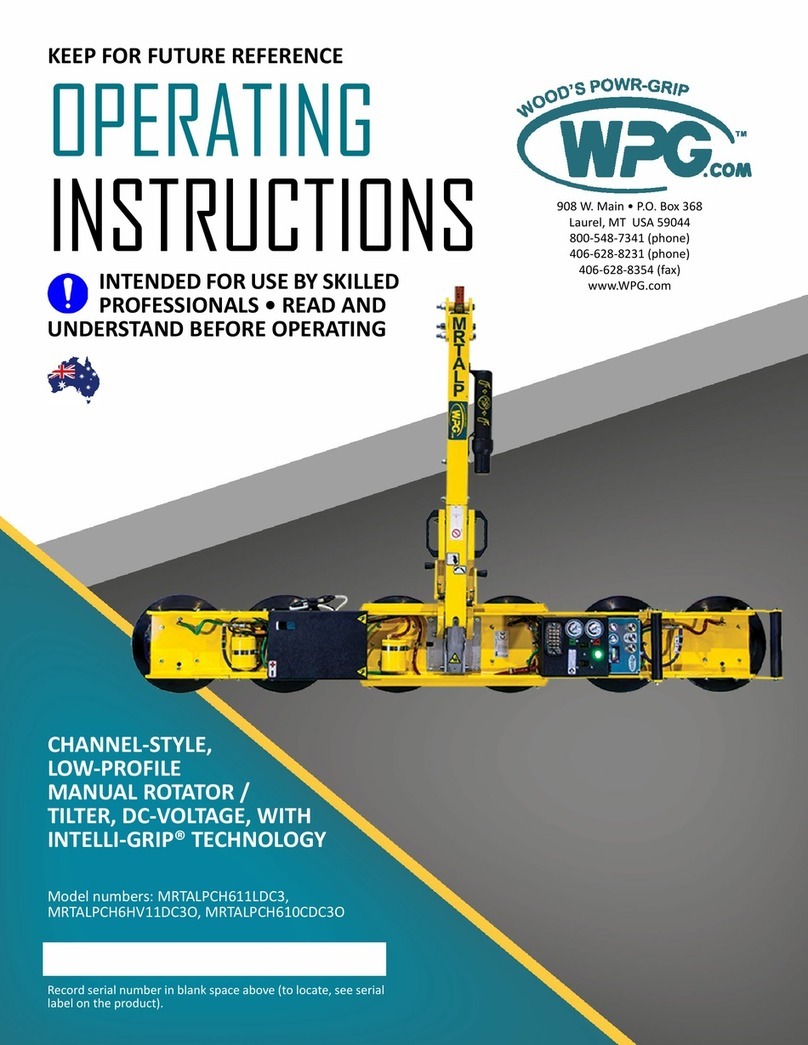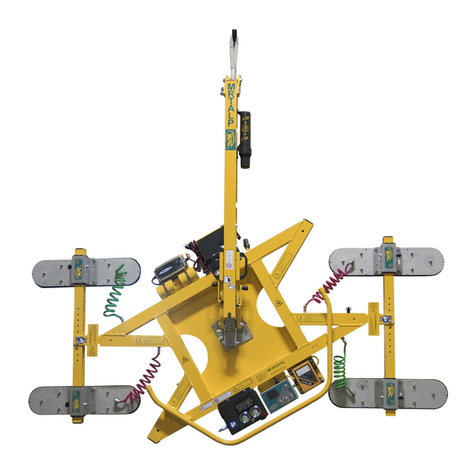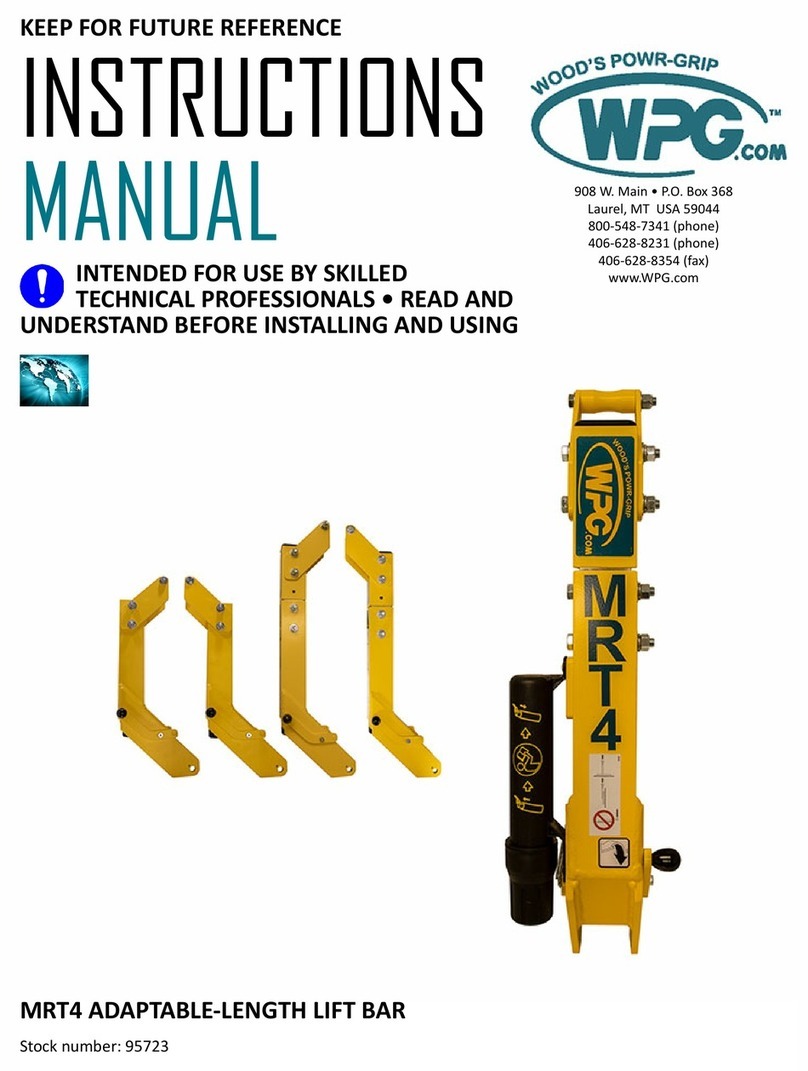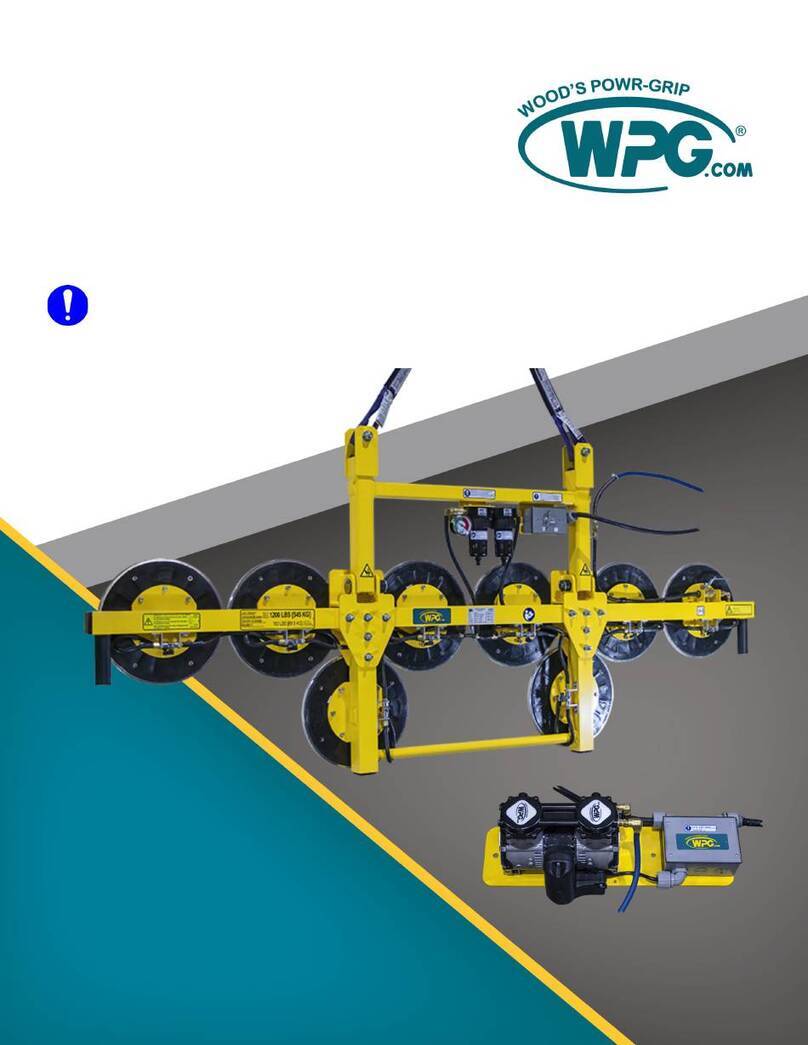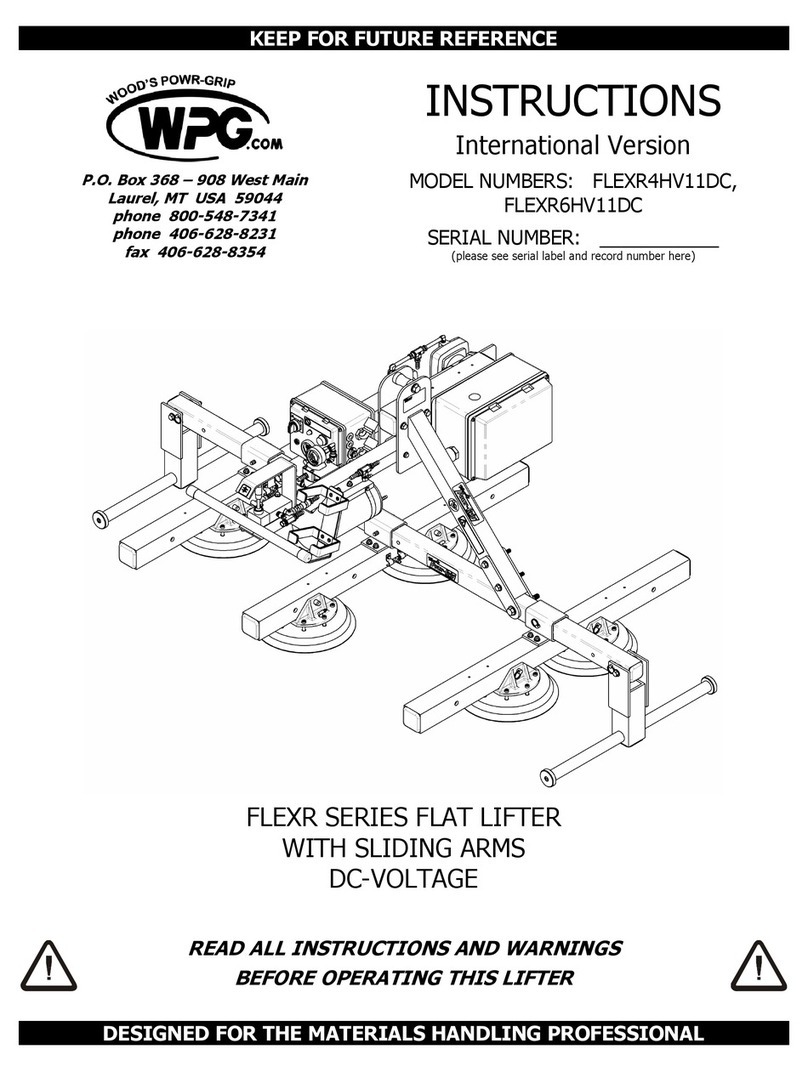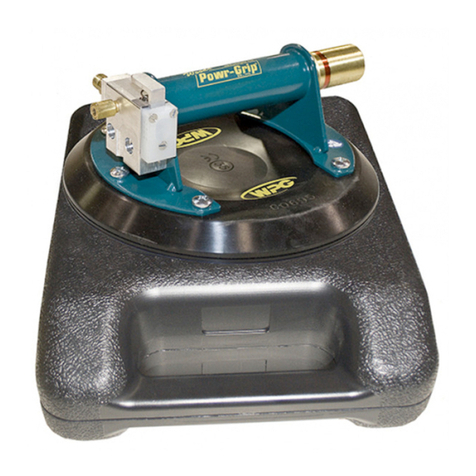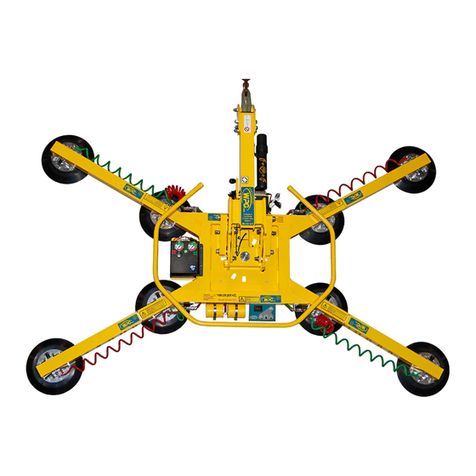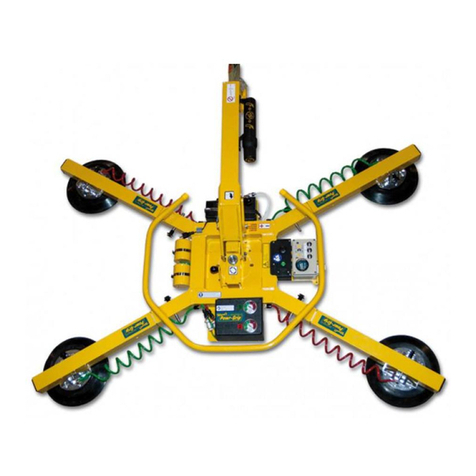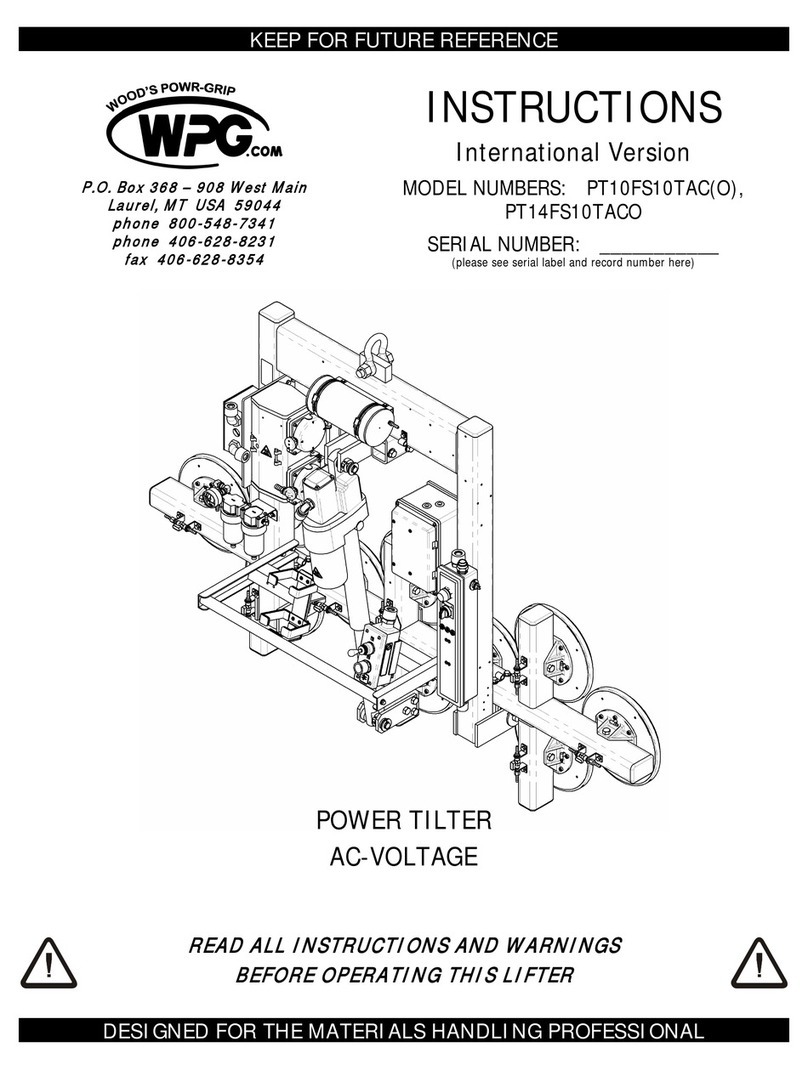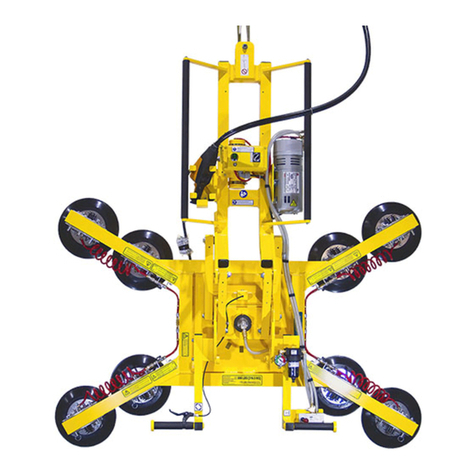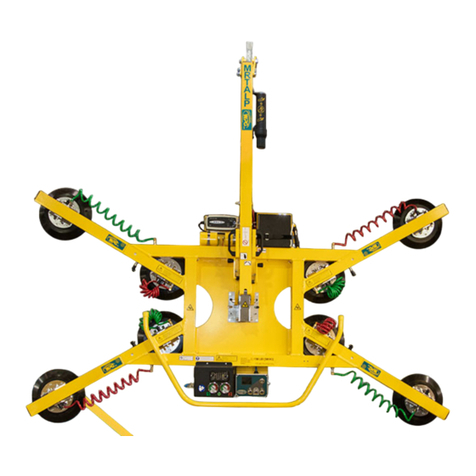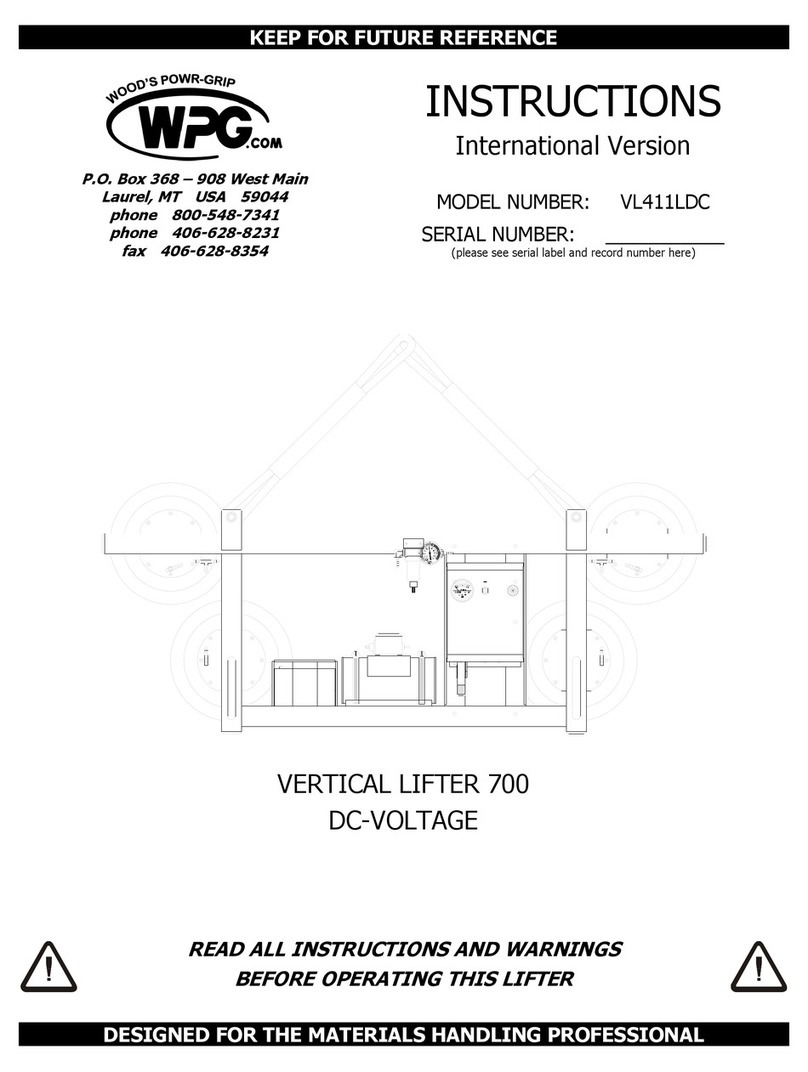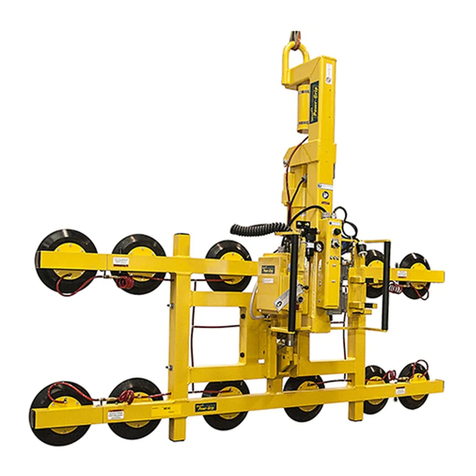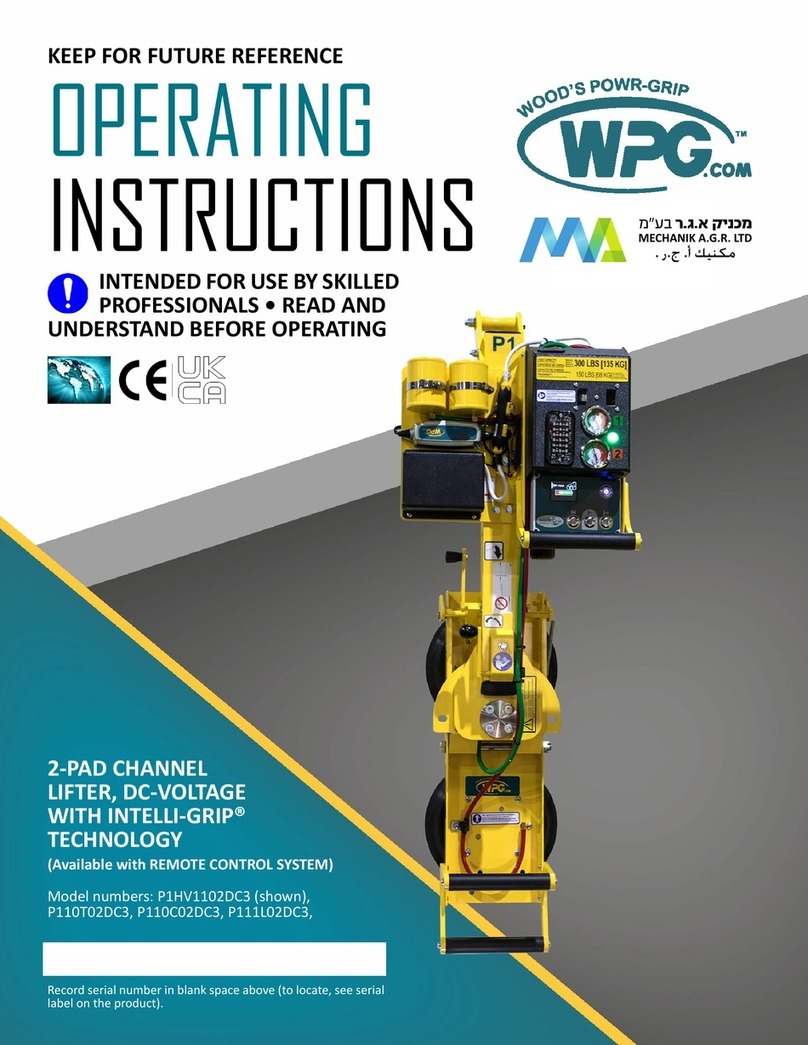
Product
Description
Designed for use with hoisting equipment, MRTA8-DC3 lifters support loads using vacuum and
manipulate loads using manual 360° rotation and mechanically assisted, manual 90° tilt motions.
Model Number MRTA811LDC3 MRTA810TDC3 MRTA810CDC3O
Vacuum Pads1
1...... Available with other rubber compounds for special purposes (see www.wpg.com).
(8 each, standard rubber)
11" [28 cm] nom. diameter,
lipped (Model G3370)
10" [25 cm] nom. diameter,
with ring (Model VPFS10T2
2...... Standard with replaceable sealing rings for rough or textured surfaces (see “REPLACEMENT PARTS”).
)
10" [25 cm] nom. diameter,
concave (Model G0750)
Pad Spread3
3...... The illustrations under “TOCHANGE THE PAD FRAME CONFIGURATION”show the Pad Spread and Maximum Load Capacity for all approved MRTA811LDC pad
frame configurations.
---------------------------- (to outer edges) ----------------------------
Length ‒Maximum 104¾" [266 cm] 104" [264 cm] 102½" [260 cm]
Length ‒Minimum 47" [119 cm] 46" [117 cm] 44¾" [114 cm]
Width‒Maximum 58¾" [149 cm] 58" [147 cm] 56½" [143 cm]
Width ‒Minimum 12½" [32 cm] 11½" [29 cm] 10" [26 cm]
Maximum Load
Capacity4
4...... The Maximum Load Capacity is rated at a vacuum of 16" Hg [-54 kPa] on clean, smooth, nonporous flat surfaces with a friction coefficient of 1. Pad
compound, load rigidity, strength, surface conditions, overhang, angle, center of gravity and temperature can also affect the lifting capacity. A “qualified
person” should evaluate the effective lifting capacity for each use (see definition under “Rated Load Test”).
Total with 4 Pads 320 kg 270 kg 270 kg
Total with 8 Pads 635 kg 545 kg 545 kg
Lifter
Weight 91 kg 87 kg 87 kg
Power System 12 volts DC, 5.5 amps
Battery Capacity 7 amp-hours
Rotation
Capability Manual, 360°, with latching at each ¼ turn (when required)
Tilt
Capability
Manual, 90°, with four-bar tilt linkage that provides mechanical advantage and tilt locks that prevent tilt
motion when engaged
Product
Options See separate instructions about options.
Operating
Elevation Up to 6,000' [1,828 m]
Operating
Temperatures 32° — 104° F [0° — 40° C]
Service Life 20,000 lifting cycles, when used and maintained as intended5
5...... Vacuum pads, filter elements and other wear-out items are excluded.
Software Version Intelli-Grip®7.6
Design
Standard
Compliant with AS 4991. Note: Each circuit of the Dual Vacuum System complies with the capacity
requirements of this Standard.
Rev 5.0/2-21 MRTA8-DC3: #35121AUS3
SPECIFICATIONS












